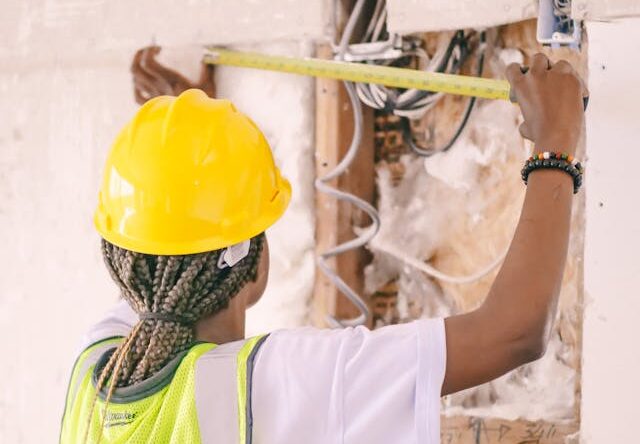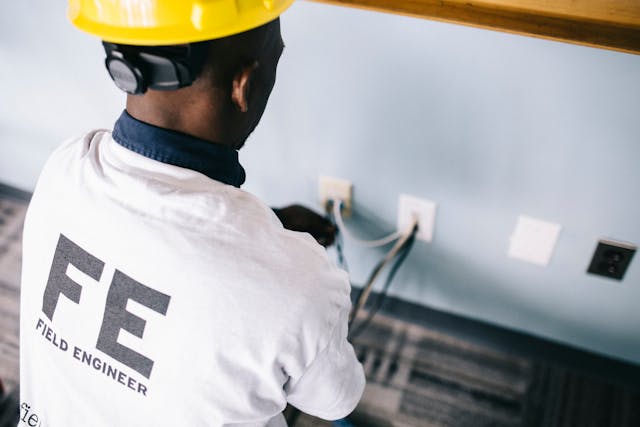The electrical industry stands at the center of one of the most dynamic technological revolutions in history. From smart grids and renewable integration to AI-driven maintenance and automation, technology is reshaping how electricity is produced, distributed, and managed. For electrical professionals, this transformation offers both challenge and opportunity—a chance to evolve from traditional service providers into innovators driving the energy future forward. The next decade of electrical services will be defined by intelligence, connectivity, and sustainability.
The Digital Revolution in Electrical Work
Electrical systems are no longer just physical networks of wires and circuits—they are digital ecosystems. The rise of smart technology, data analytics, and remote management tools has turned electrical work into a hybrid of engineering and IT. Electricians now install connected systems that communicate through sensors, cloud platforms, and artificial intelligence.
These digital advancements enable real-time diagnostics, energy optimization, and predictive maintenance. Electrical services are moving from reactive to proactive, where systems can detect faults, balance loads, and self-adjust before problems escalate. The result is greater safety, efficiency, and reliability across residential, commercial, and industrial applications.
Smart Homes and Connected Living
Smart homes are leading the transformation in residential electrical installations. Modern households now rely on interconnected systems for lighting, climate control, security, and entertainment. Electricians are no longer wiring only for power—they are wiring for data and connectivity.
Voice-activated lighting, programmable thermostats, and app-controlled outlets have redefined convenience and energy management. Homeowners expect seamless integration, and electrical professionals must master smart device configuration, Wi-Fi integration, and energy monitoring systems. The electrician of the future is not just an installer but a consultant guiding clients through digital living.
Renewable Energy Integration
As global demand for clean energy grows, the electrical industry is at the heart of renewable adoption. Solar panels, wind turbines, and battery storage systems require advanced wiring, inverters, and smart controls to function efficiently. Electricians play a key role in designing and maintaining these sustainable energy solutions.
Residential and commercial clients alike are embracing solar installations and hybrid systems that feed power back into the grid. This decentralization of energy generation requires new technical expertise and certification. The transition to renewables positions electrical professionals as essential players in achieving sustainability goals and reducing carbon footprints worldwide.
The Rise of Electric Vehicles and Charging Infrastructure
The surge in electric vehicle (EV) adoption has created an entirely new service category for electricians. Installing charging stations for homes, businesses, and public areas requires advanced electrical design and compliance with evolving safety codes. EV infrastructure also demands coordination with utility providers and integration with renewable power systems.
For electricians, EV installation is not just about wiring—it’s about understanding load management, grid impact, and user convenience. Smart chargers that communicate with mobile apps and grid systems represent the future of sustainable transportation, and electricians are leading the charge in powering mobility that’s clean, connected, and intelligent.
Automation and Robotics in Electrical Installations
Automation is revolutionizing how large-scale electrical projects are executed. Robots and AI-powered tools can now assist with wiring, inspection, and component testing, reducing labor time and human error. Drones are used for overhead line inspections and infrastructure mapping, providing precision and safety in environments once deemed hazardous.
These technologies don’t replace human expertise—they enhance it. Electricians equipped with automated systems can complete installations faster and with greater accuracy. The future of electrical work will see more collaboration between human skill and robotic precision, improving productivity across the board.
Predictive Maintenance and AI Diagnostics
Artificial intelligence is transforming maintenance from a reactive process into a predictive one. Sensors embedded in electrical systems collect data on current flow, temperature, and vibration, which AI algorithms analyze to detect irregularities. This allows potential failures to be identified and corrected before costly breakdowns occur.

For businesses, predictive maintenance minimizes downtime and extends equipment lifespan. For electricians, it creates new opportunities to provide data-driven service contracts. By combining diagnostics with analytics, professionals can offer ongoing performance insights, turning maintenance into a continuous, intelligent process rather than a scheduled event.
The Role of the Internet of Things (IoT)
The Internet of Things has connected nearly every aspect of electrical infrastructure. From circuit breakers that report performance to lighting systems that adjust automatically, IoT devices are revolutionizing monitoring and control. Electricians are increasingly responsible for installing and integrating these networked systems across both residential and commercial settings.
IoT-enabled solutions allow property managers and homeowners to track energy use in real time, automate operations, and detect faults remotely. This connectivity not only enhances user convenience but also supports sustainability by optimizing energy distribution. The more connected electrical systems become, the greater the need for skilled professionals who understand both wiring and data.
Energy Storage and Smart Grids
The transition to renewable energy has accelerated the need for efficient energy storage. Battery technologies like lithium-ion and solid-state storage are changing how power is distributed and used. Electricians are central to deploying these systems, ensuring safe installation and integration with smart grids.
Smart grids use sensors and digital controls to balance electricity flow, detect outages instantly, and reroute power dynamically. For electricians, this means new training in grid communication protocols and data management. The next generation of power infrastructure depends on professionals who can merge traditional electrical skills with digital fluency.
Safety Innovations and Compliance Technology
Safety has always been the backbone of electrical work, and new technology is making it even stronger. AI-powered inspection tools, digital safety audits, and augmented reality (AR) training programs are helping electricians identify hazards more accurately. Wearable sensors can monitor exposure to voltage, temperature, and fatigue, providing instant alerts if danger is detected.
Compliance is also becoming smarter. Digital platforms now manage inspection reports, licensing renewals, and safety documentation automatically. These advancements reduce human error and ensure that every installation meets evolving national and international standards with precision and transparency.
Sustainable Design and Eco-Efficiency
Sustainability is reshaping how electrical systems are designed and installed. Energy-efficient lighting, motion sensors, and automation systems are standard in modern buildings. Electricians are now integrating energy management systems (EMS) that monitor consumption and reduce waste across commercial and residential properties.
Green construction trends are also influencing materials and methods. From recyclable wiring to low-impact installation techniques, electrical work is becoming more environmentally conscious. As sustainability continues to drive innovation, electricians will play a critical role in implementing systems that meet both performance and ecological goals.
Training for the Next Generation of Electricians
The rapid evolution of technology demands a new breed of electrician—one fluent in both traditional trade skills and digital tools. Training programs are expanding to include smart systems, renewable energy design, automation, and cybersecurity.
Continuous education is essential. As AI and IoT redefine the electrical landscape, electricians who stay updated on emerging trends will maintain a competitive edge. This combination of craftsmanship and technical literacy ensures that the industry remains adaptable, skilled, and ready to power the future.
Cybersecurity and System Protection
As electrical systems become more connected, they also become more vulnerable to cyber threats. Hackers targeting smart grids or building automation systems could disrupt entire infrastructures. Electricians and engineers must now incorporate cybersecurity into system design, installation, and maintenance.
Secure configurations, encrypted data transmissions, and regular software updates are now part of electrical best practices. Training in cybersecurity awareness ensures that both technicians and clients understand how to protect connected systems. Safety in the digital age extends beyond physical hazards—it includes digital resilience.
The Evolving Role of Electrical Professionals
The future of electrical services is about more than wiring—it’s about problem-solving, innovation, and integration. Electricians are becoming consultants who help clients design smarter spaces, reduce costs, and improve sustainability. They collaborate with architects, IT professionals, and engineers to bring complex energy systems to life.
As automation and intelligence spread through every aspect of infrastructure, the electrician’s role expands. They are no longer just service providers but key contributors to energy innovation, bridging the gap between technology and humanity in a world powered by data and electricity alike.
Conclusion: A Connected Future of Power
The transformation of electrical services through technology is redefining the industry from the ground up. Smart systems, AI analytics, renewable integration, and automation are all converging to create an ecosystem that’s efficient, sustainable, and deeply intelligent.
For electrical professionals, the future holds limitless opportunity. Those who embrace digital tools, adapt to renewable technologies, and master smart installations will lead the charge toward a brighter, more connected world. The current of innovation is already flowing—and those ready to evolve will be the ones powering tomorrow.
